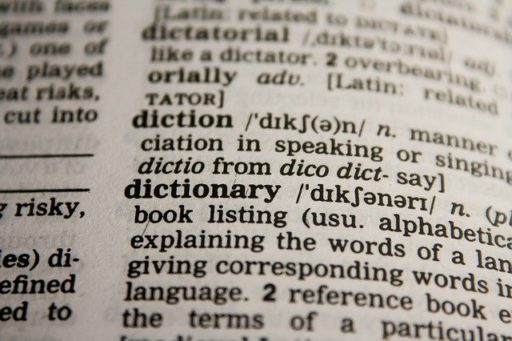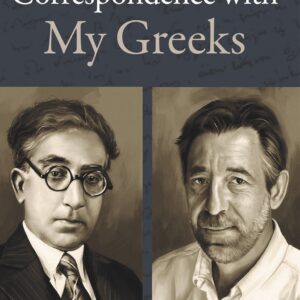Some years before he died, my father passed on to me his 10-volume Century Dictionary and Cyclopedia. He wanted me to have it because he knew of my passion for word-study.
The Century Dictionary was an American publication, first appearing in 1889, then revised almost annually until 1914. My Dad’s (now my) edition was published in 1906. The CD‘s purpose and scope are stated in the Preface:
“The plan of The Century Dictionary includes three things: the construction of a general dictionary of the English language which shall be serviceable for every literary and practical use; a more complete collection of the technical terms of the various sciences, arts, trades, and professions than has yet been attempted; and the addition to the definitions proper of such related encyclopedic matter, with pictorial illustrations, as shall constitute a convenient book of general reference.” This plan results in “a very large addition to the vocabulary of preceding dictionaries,” with about 200,000 words being defined.
The Preface goes on to note that included in the CD are obsolete words, etymologies, illustrative quotations, encyclopedic features, and pictorial illustrations.
Except for the last two features, I’m sure you’re thinking, as you read this, of the Oxford English Dictionary. So am I, and below I’ll do some comparison of entries in the two tomes. For now I’ll just say that I was astonished to discover that the CD predates the OED, which cites the CD as one of its sources.
Lately I’ve been browsing in my Century Dictionary—not an easy task, since each volume weighs in at about ten pounds, so lifting one from the bottom shelf where the volumes reside could be literally back-breaking. Also, the typeface gets so tiny for encyclopedic details that I need a magnifying glass to read them. As I browse, I’ve been comparing specific entries to those in The Oxford English Dictionary, which I also own—in its compact form (which is woozy-making to read even with its magnifying glass.)
This isn’t quite a comparison of equals, since my CD edition was published in 1906 and my edition of the OED in 1971. But, just at random, I’ll take “abdomen” in each dictionary. (My original plan had been to start at the very beginning and compare the entries on “a,” but the length of the entries—over 4,000 words long in CD—made any comparison unwieldy. So I leafed through the succeeding pages and found myself pausing over “abdomen.“)
First, both dictionaries agree that the etymology is “uncertain.” Then OED gives as its definitions:
#1. obsolete: “fat deposited round the belly” (followed by the OED‘s signature dated quotations).
#2. Anat. “The belly; the lower cavity of the body, from the diaphragm downwards…” with more anatomical detail, followed by those dated quotations.
#3. Zool. “In the higher Anthropoda (as insects, spiders, and crabs), the posterior division of the body…” (followed, of course, by the dated quotes).
And now, just passing my magnifying glass over the OED pages, I see that the historical quotations actually take up more space than the definitions. I don’t recall noticing that about the OED before.
Here’s abdomen in CD:
#1 is comparable to OED‘s #2: “The belly; that part of the body of a mammal which lies between the thorax and the pelvis.” But what follows is unique to CD: about two hundred words of anatomical detail.
#2 is an encyclopedic entry describing where the abdomen is in “vertebrates below mammals,” with a quote from a scientific source and a large drawing of an insect with its abdomen marked.
#3, 4, and 5: In entomology and in other forms of creatures, with one scientific source quote.
But what especially strikes me about the CD here is its pictorial illustration of “abdominal regions”: a sketch of a naked man (genitals properly covered by a fig leaf of sorts), with regions of the abdomen described in encyclopedic detail.
That fig leaf (of sorts) gave me the idea to look up “intercourse” in both dictionaries—wondering how it was treated in 1906 vs. 1971. The CD, after the expected definitions like “communication” and “interchange,” tucks into the very end of its entry: “Sexual intercourse, coition.” The comparable OED definition is equally (embarrassedly?) mum: just “Sexual connexion” (with two brief historical quotations). By contrast, the dictionary in my Apple computer links “intercourse” to “sexual intercourse,” which is defined in graphic detail: “sexual contact between individuals involving penetration, especially the insertion of a man’s erect penis into a woman’s vagina, typically culminating in orgasm and the ejaculation of semen.” Whew! That’s as close to an X-rated definition as I can imagine.
But back to The Century Dictionary. Its encyclopedic features come fully into play in the final two volumes. Volume 9 is The Century Cyclopedia of Names, with the wonderfully leisurely subtitle of “A Pronouncing and Etymological Dictionary of Names in Geography, Biography, Mythology, History, Ethnology, Art, Archaeology, Fiction, Etc. Etc., Etc.” (Yes, those “etc.”s are there in the subtitle.) Inside I see short entries on names—from Aa (“A river in the province of North Brabant, Netherlands, which unites with the Dommel near Herzogenbusch”) to Zuloaga, Ignacio (“Born at Eibar, Spain, July 26, 1870. A noted Spanish painter…” with several of his works then listed).
Volume 10 is an atlas. But not just any atlas. Its Preface notes some of its features unique for their time: “the main routes of discovery and exploration” in various parts of the world; “the marking (with the addition of dates) of a large number of sites of important battles, ancient and modern”; “important highways and caravan routes in countries where there are few railroads or none”; and more. Browsing inside, I see six different historical maps of the U.S.: “Early colonial grants 1620 to 1689”; “1783: the thirteen original colonies”; “Acquisition of territories by the United States”; the forty-eight states, with date of each’s entry into the U.S.; “Slavery in the U.S., 1775-1865”; and the U.S. “at the period of the Civil War,” with Confederate states color-coded. These historical maps are in addition to the modern (1906) ones: the entire U.S., followed by a separate map of each of the states. The rest of the world comes next, and it’s always fun to see how the world was divided up over a century ago. I see, for instance, separate maps of (the no longer existing) Arabia and Persia. And African countries are unrecognizable: Abyssinia, Portuguese West Africa, Italian Somalia, and so on.
But thinking now just about the eight dictionary volumes of my CD, I can’t help wondering: since the CD pre-dates and is more exhaustive than the OED, how did the OED get to be our number one go-to English dictionary, while the CD has faded away? Maybe because Britain, rather than the U.S., was the center of the English-speaking world until after World War II?
The CD, though, didn’t exactly die. An abridged edition appeared in 1927, then it morphed into the American College Dictionary (1947), which was the initial Random House Dictionary.
Still, I can’t help wishing that my 10-volume Century Dictionary and Cyclopedia had stayed in print—of course in continually revised, updated (and less weighty) editions.
Peggy Rosenthal has a PhD in English Literature. Her first published book was Words and Values, a close reading of popular language. Since then she has published widely on the spirituality of poetry, in periodicals such as America, The Christian Century, and Image, and in books that can be found here.





